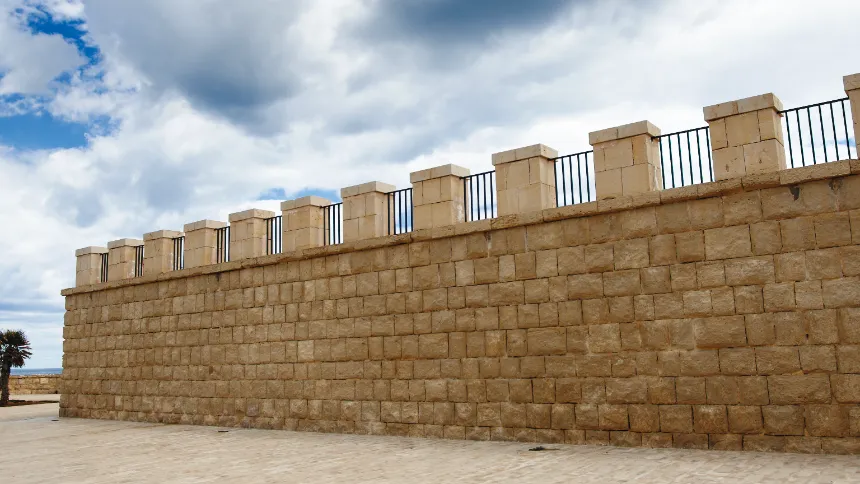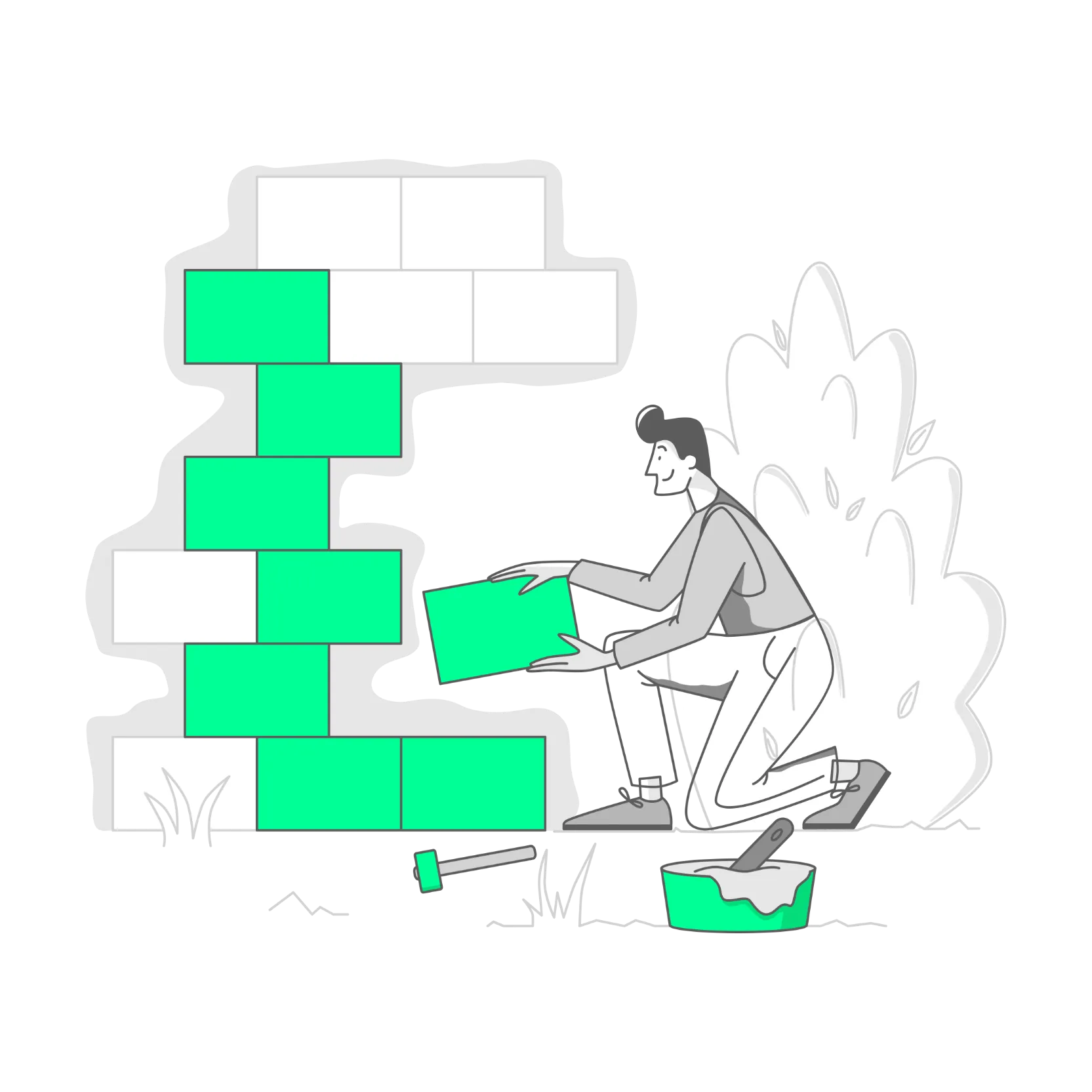How to Repair a Leaning Retaining Wall
Retaining walls play a vital role in safeguarding your property by preventing soil erosion, managing slopes, and maintaining structural stability. Whether holding back soil on a steep hill or supporting landscaping features, a well-built retaining wall is important for both functionality and aesthetics. However, when a retaining wall begins to lean, it signals a problem that requires immediate attention. Left unchecked, a leaning wall can collapse, leading to costly repairs, property damage, and potential safety hazards. Addressing the issue promptly is critical to preserving your property’s integrity and avoiding further complications. If you want to learn how to repair a leaning retaining wall, you’re in the right place. This guide will discuss the benefits of repairing your retaining wall the causes, best repair methods, and more.
At Piers and Piles, we specialize in repairing leaning retaining walls using cutting-edge solutions like helical tiebacks. These durable steel anchors offer long-lasting stability by reinforcing your wall and restoring its structural integrity. With decades of experience and a focus on reliable, minimally invasive repair methods, we provide the expertise needed to protect your property for the long term.
Protect Your Property and Peace of Mind – Contact Us for Expert Retaining Wall Repair Today!

Benefits of Repairing a Leaning Retaining Wall
Addressing a leaning retaining wall promptly offers several advantages, ensuring the long-term safety and stability of your property. Beyond preventing further damage, proper repairs provide structural, functional, and financial benefits that make them a wise investment.
Prevents Wall Collapse
Timely repairs eliminate the risk of structural failure, protecting your property and surrounding areas.
Enhances Property Safety
Stabilized walls reduce hazards such as falling debris or soil erosion, keeping your property safe.
Protects Landscaping and Soil
Proper repair ensures your landscaping and soil remain intact and properly supported.
Increases Property Value
A well-maintained retaining wall boosts curb appeal and adds value to your property.
Causes of a Leaning Retaining Wall
Understanding why retaining walls lean in the first place is key to implementing the right repair strategy.
Here are the most common causes of leaning retaining walls:
1. Poor Drainage Leading to Hydrostatic Pressure
Inadequate drainage systems can cause water to accumulate behind the wall, creating hydrostatic pressure. Over time, this pressure pushes the wall outward, leading to noticeable tilting or leaning.
2. Inadequate Initial Construction or Faulty Design
Retaining walls that lack proper reinforcement or are built with substandard materials often fail to withstand soil pressure, especially in areas with unstable ground conditions.

3. Soil Erosion or Changes in Soil Conditions
Shifts in the surrounding soil, such as erosion caused by heavy rainfall or poor landscaping practices, can weaken the wall’s base, reducing its ability to hold back the earth.
4. Impact of Nearby Structures or Vegetation
Large trees, nearby foundations, or construction projects can exert additional pressure on retaining walls. Root systems or ground movement from these factors can destabilize the structure over time.
5. Seasonal Freeze-Thaw Cycles
In colder climates, water seeps into cracks in the wall and freezes during winter. As the water expands, it causes additional stress, weakening the wall’s structure and leading to misalignment.

Warning Signs of a Leaning Retaining Wall
A leaning retaining wall often exhibits clear warning signs before the damage becomes severe. Recognizing these signs early can prevent costly repairs and structural failure:
- Visible Tilting or Leaning: If the wall is no longer vertical and shows noticeable slanting, it’s a major indication of structural instability.
- Cracks Along the Wall Surface or Mortar Joints: Cracks are often the first visible symptom of excessive pressure or soil movement behind the wall.
- Separation Between Wall Blocks or Panels: Gaps forming between blocks or panels signal a loss of structural cohesion.
- Bulging Sections of the Wall: Bulging areas suggest uneven pressure distribution, often caused by hydrostatic pressure or soil instability.
- Pooling Water Near the Wall Base: Water accumulation indicates poor drainage, which can lead to hydrostatic pressure and worsen leaning.
Assessing the Damage Before Repair
Repairing a leaning retaining wall begins with a thorough evaluation. A professional inspection ensures that the underlying causes are addressed, leading to a durable solution. Key steps include:
- Importance of Professional Inspection: Qualified experts can identify structural issues, soil conditions, and other contributing factors accurately.
- Structural Evaluation to Identify the Root Cause: Determining why the wall is leaning—whether it’s drainage, soil erosion, or faulty construction—is critical to selecting the right repair method.
- Soil Testing to Understand Surrounding Conditions: Soil analysis reveals important details about stability, drainage capabilities, and pressure on the wall.
- Determining the Extent of Wall Damage: Deciding between partial repair and complete reconstruction depends on the wall’s condition and level of deterioration.
Common Methods to Repair a Leaning Retaining Wall
As we said above, the repair method often depends on the extent of the wall’s damage, the underlying cause of the leaning, and the surrounding environmental conditions. Whether it’s hydrostatic pressure due to poor drainage, soil instability, or a design flaw, there are several effective solutions to restore a leaning retaining wall’s stability and functionality.
Here are a few methods to your right.
Regrading and Drainage Solutions
How It Works: Proper drainage prevents water from building up behind the wall, reducing hydrostatic pressure.
Options: Installing French drains, adding weep holes, or regrading the slope to direct water away from the wall can address drainage issues.
Wall Reinforcement Techniques
How It Works: Braces or anchors provide additional support to stabilize the wall.
Applications: Reinforcement is often a non-invasive way to restore structural integrity without rebuilding the entire wall.
Reconstruction
When Needed: In cases of severe leaning or damage, rebuilding part or all of the wall ensures long-term stability.
Process: This involves dismantling the damaged section, addressing the root cause, and reconstructing with proper techniques.
Why Helical Tiebacks Are the Best Solution
Helical tiebacks stand out as one of the most reliable and efficient solutions for repairing leaning retaining walls. These steel anchors provide immediate stabilization by transferring load pressure to stable soil layers deep underground. Their innovative design and versatility make them ideal for addressing a variety of soil conditions and wall designs.
Benefits of Helical Tiebacks:

How to Repair a Leaning Retaining Wall: Step-by-Step
Repairing a leaning retaining wall requires a systematic approach to ensure long-lasting results. Here’s how the process typically unfolds:
Assess the Damage and Soil Condition
Begin with a thorough inspection to determine the root cause of the leaning and the extent of damage.
Remove Any Nearby Vegetation or Debris
Clear away anything applying extra pressure or obstructing the repair process.
Improve Drainage Systems
Address drainage issues by installing French drains, weep holes, or other solutions to prevent hydrostatic pressure from recurring.
Install Helical Tiebacks
Drive helical tiebacks deep into the soil to stabilize and reinforce the wall.
Perform Necessary Cosmetic Repairs
Seal cracks, re-mortar joints, and restore the wall’s appearance to enhance functionality and aesthetics.
Preventive Measures to Avoid Leaning Walls in the Future
Preventive maintenance is key to ensuring your retaining wall remains stable for years to come. Consider the following measures:
- Proper Drainage Systems: Prevent water buildup behind the wall by incorporating drainage solutions like French drains and surface grading.
- High-Quality Construction Materials: Ensure the use of durable and weather-resistant materials during installation or repairs.
- Periodic Maintenance and Inspections: Regularly inspect the wall for signs of wear, cracks, or drainage issues to address problems early.
- Landscape and Vegetation Management: Keep large trees and shrubs at a safe distance from the wall to minimize root pressure and soil destabilization.
Why Choose Piers and Piles
for Retaining Wall Repair in Long Island
When it comes to repairing leaning retaining walls, Piers and Piles is the trusted choice for property owners in Long Island, Brooklyn, and Queens.
- Proven Expertise
- State-of-the-Art Techniques
- Comprehensive Warranties
- Local Focus
- Industry-Leading Warraanties

How to Repair a Leaning Retaining Wall: Final Thoughts
We hope this blog has let you know how to repair a leaning retaining wall. Remember, timely repairs for leaning retaining walls are critical to protecting your property and preventing further damage. By addressing the root causes and employing proven solutions like helical tiebacks, you can restore your wall’s stability and ensure long-lasting results.
Contact Piers and Piles Today for a Free Inspection and Personalized Retaining Wall Repair Plan!